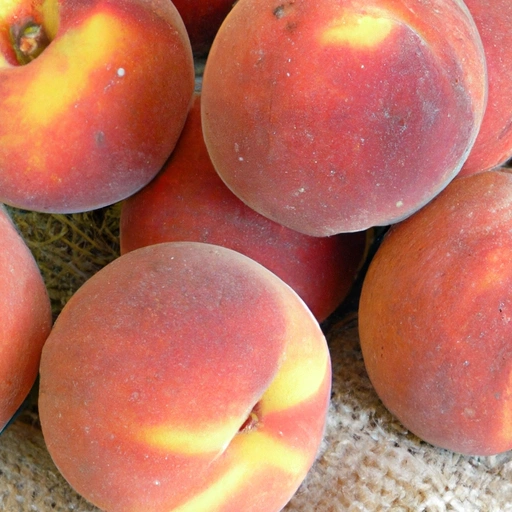Peach
Description

The peach is a succulent stone fruit known for its fuzzy skin and sweet, aromatic flesh. Typically round with a groove running down one side, peaches have a velvety exterior ranging in color from red, pink, to yellow overtones, surrounding a hard, wood-like pit. Peaches are highly versatile in culinary applications and contribute significant nutritional benefits, making them a beloved ingredient around the world.
Common uses
Peaches are commonly used fresh, canned, or dried and are a popular ingredient in desserts, salads, and savory dishes. They are also processed into jams, jellies, and preserves, as well as juices and peach-flavored beverages. In addition to culinary uses, peaches are found in cosmetic products for their fragrance and potential skin benefits.
Nutritional value
Calories
A medium-sized peach (about 150 grams or 5.3 ounces) contains approximately 58 calories.
Protein
Each peach offers about 1.4 grams of protein, making it a low-protein fruit.
Fat
Peaches are virtually fat-free, with a medium peach containing less than 0.4 grams of fat.
Carbohydrates
The carbohydrate content of a medium peach is about 14 grams, which includes 2.4 grams of dietary fiber and 13 grams of natural sugars.
Vitamins
Peaches are a good source of vitamin C, providing about 10% of the daily recommended intake, as well as vitamins A, E, and K.
Minerals
This fruit contains essential minerals such as potassium (285 milligrams, or 8% of the daily value), and smaller amounts of magnesium, phosphorus, and calcium.
Health benefits
Peaches contribute to overall health with their rich supply of vitamins and antioxidants. They support immune function, skin health, and may reduce allergy symptoms. The fiber in peaches can aid digestion and help maintain a healthy weight.
Potential risks
While peaches are generally safe for consumption, they can harbor pesticides if not washed properly. Additionally, those with a stone fruit allergy or fructose intolerance should consume peaches with caution.
Common recipes
Peaches feature in diverse recipes such as peach cobbler, pies, smoothies, and chutneys. They are equally at home in savory dishes like salads, salsas, and grilled peach sides.
Cooking methods
Peaches can be eaten raw, grilled, baked, poached, or sautéed, allowing them to release their natural sweetness or gain a caramelized depth of flavor.
Pairing with other ingredients
Peaches pair well with a variety of flavors, including cinnamon, vanilla, almond, basil, and proteins like pork and chicken. They also complement dairy products like cream and mascarpone.
Summary
Peaches, with their sweet taste and nutritional profile, have been cherished through centuries across various cultures. They offer versatility in the kitchen, whether in desserts, drinks, or savory dishes, and provide health benefits, making them a delightful addition to any diet.